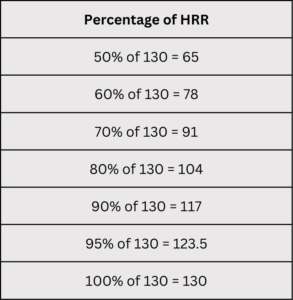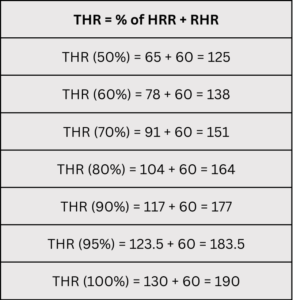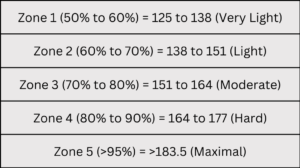How to Use Your Heart Rate to Train Better?

A few basics to begin with…
Heart Rate (HR) is an index of the internal load at any given time.
Let’s say you can run at a pace of 6 min/km with a steady heart rate of 155 BPM on a good day.But the same pace may trigger a heart rate of 170 bpm if you have been unwell or recovering from an illness.The point here is that although the external load (pace of 6 min/km) is the same, the internal load varies with health and is directly reflected in the heart rate response.
We need to understand a few terms before proceeding with the calculations.
- Maximal Heart Rate (MHR)
- Resting Heart Rate (RHR)
- Heart Rate Reserve (HRR)
- Training Heart Rate (THR)

1. Maximal Heart Rate (MHR)
MHR is the ‘physiological maximum’ or the highest heart rate reached during maximal exercise. This is calculated using a formula.
MHR = 220 – Age (years)
2. Resting Heart Rate (RHR)
RHR is the heart rate at rest. It is measured just after waking up while you are still on the bed.
3. Heart Rate Reserve (HRR)
HRR is the range between the Maximal and Resting Heart Rates.
HRR = MHR – RHR
4. Training Heart Rate (THR)
THR is the heart rate that you need to achieve to exercise at the desired intensity.
Now that we know about the different types of heart rates, let’s do some calculations.
For illustration purposes, let’s take an example of an athlete who is 30 years old, and has a resting heart rate of 60 beats per minute.

Step 1: Calculate the Maximal Heart Rate (MHR)
MHR = 220 – 30 = 190
Step 2: Calculate the Heart Rate Reserve (HRR)
HRR = 190 – 60 = 130
Step 3: Calculate the % of Heart Rate Reserve (HRR)

Step 4: Calculate Training Heart Rate (THR)

Step 5: Heart Rate Zones

This method of calculating the training heart rates by using the percentage of heart rate reserve is called the Karvonen method.
According to studies, the % of VO2max correlates with the % of heart rate reserve. The Karvonen method can be used as an estimate of not just the exercise intensity, but also the VO2max.
Understanding the Zones…
Zone 1 – Very Light
Zone 1 is a very light activity that feels easy and you can continue eternally.
You are said to have warmed up when you have reached the Zone 1 HR. In a HIIT program, Zone 1 HR is the recovery zone.
Zone 2 – Light
Zone 2 exercise is light and aerobic, like brisk walking, etc. All steady state cardio like jogging falls under this zone.
Zone 3 – Moderate
It is the Moderate Aerobic zone that can be used for steady-state exercises like cycling, jogging, etc.
Zone 4 – High
Understanding the HR Zones….
Zone 5 – Maximal
Zone 5 is a near-maximal exercise that triggers anaerobic energy production. It should be done infrequently, maximum a couple of times in a week, with adequate recove.
